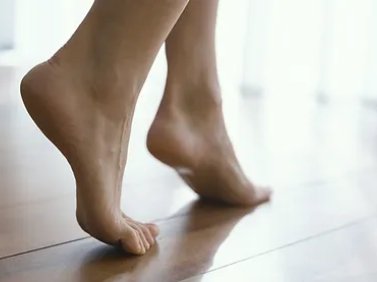Posterior Tibialis
Tendinopathy Injury Guide

As an athlete, your body undergoes tremendous stress and strain, often leading to various injuries and conditions. One such condition that frequently affects athletes is Posterior Tibialis Tendinopathy (PTT), commonly known as posterior tibialis tendinitis. This condition can significantly hinder your performance and quality of life. However, by understanding its symptoms, causes, and rehabilitation strategies, you can take control of your recovery journey. At Latitude Physiotherapy, we specialize in treating athletes and helping them return to peak performance. Let’s delve into the details of this condition to empower you with the knowledge you need to make confident decisions regarding your treatment.
Symptoms:
Posterior Tibialis Tendinopathy primarily impacts the posterior tibialis tendon, which plays a crucial role in supporting the arch of your foot. When this tendon becomes inflamed or injured, you may experience a range of symptoms. These include pain and swelling on the inside of the ankle or foot, difficulty with activities that involve pushing off the foot, such as running, jumping, or walking on uneven surfaces. Aching or throbbing sensations along the course of the tendon, weakness, and instability in the affected foot, and limited range of motion and flexibility are also common characteristics of this condition.
Anatomy:
To visualize the Posterior Tibialis, use the 🔍 button to search Tibialis Posterior.
Click and hold to rotate. Shift+click and hold to pan. Click+scroll to zoom.
The posterior tibialis tendon originates from the back of the calf, specifically the posterior tibialis muscle, and travels down the inside of the ankle to attach to multiple bones in the foot. This tendon plays a crucial role in maintaining the arch of the foot and providing stability during weight-bearing activities.
When the posterior tibialis tendon becomes injured or inflamed, it can have significant implications on foot and ankle function. As the tendon weakens or becomes dysfunctional, it can lead to a collapse of the arch, resulting in a condition called acquired flatfoot deformity. This can cause changes in the alignment and mechanics of the foot, leading to altered gait patterns and increased stress on other structures in the foot and ankle.
Furthermore, the posterior tibialis tendon is responsible for controlling pronation, which is the natural inward rolling motion of the foot during the gait cycle. When the tendon is compromised, excessive pronation can occur, leading to an unstable foot and an increased risk of developing other foot and ankle problems, such as plantar fasciitis, Achilles tendonitis, or stress fractures.
The implications of posterior tibialis tendinopathy extend beyond the foot and ankle. As an athlete, the posterior tibialis tendon plays a crucial role in providing stability and propulsion during dynamic movements, such as running, jumping, and cutting. When the tendon is injured or inflamed, it can significantly impact an athlete’s ability to perform these activities efficiently and effectively, leading to decreased performance and potential compensation patterns that may result in further injuries.
Causes:
Understanding the causes of Posterior Tibialis Tendinopathy is essential in preventing its occurrence or reoccurrence. Several factors contribute to this condition. Overuse is a common cause, which occurs due to repetitive stress on the posterior tibialis tendon from activities like running, jumping, and sudden changes in direction. Training errors also play a role, including inadequate warm-up, excessive training volume or intensity, improper footwear, and sudden changes in training surface. Biomechanical abnormalities can contribute to the development of tendinopathy as well. Structural abnormalities in the foot, or an imbalance in leg muscle strength, place excessive strain on the posterior tibialis tendon. Lastly, age and degeneration also increase the risk of developing tendinopathy as tendons become less elastic and more prone to injury with age, and pre-existing conditions such as osteoarthritis or rheumatoid arthritis can exacerbate the condition.
Rehab Strategies:
Recovering from Posterior Tibialis Tendinopathy requires a comprehensive rehabilitation program tailored to your specific needs as an athlete. At Latitude Physiotherapy, we employ evidence-informed strategies to help you achieve optimal recovery and prevent future injuries. Our rehabilitation approach consists of several key components.
Pain management is crucial in the initial stages of treatment. We may recommend cryotherapy, soft tissue mobilization, and massage to alleviate discomfort. Rest and modified activity are also important to allow the tendon to heal. Temporary modification or cessation of activities that aggravate the condition is often necessary, and we can guide you through a progressive and controlled return to sports.
Strengthening and flexibility exercises are a core part of the rehabilitation program. Our therapists will develop a customized exercise plan that focuses on strengthening the muscles supporting the foot, ankle, and lower leg. This includes targeted exercises for the posterior tibialis tendon to improve its function and resilience.
Biomechanical analysis is another crucial aspect of our approach. Our clinic offers advanced gait analysis and biomechanical assessments to identify any underlying issues contributing to your tendinopathy. Orthotic devices or footwear modifications may be prescribed to optimize your foot and ankle alignment during sports activities.
Manual therapy and modalities are used to enhance tissue healing, reduce pain, and restore proper biomechanics. Our skilled therapists may utilize techniques such as joint mobilization, soft tissue mobilization, dry needling, cupping, and gua sha to aid in your recovery.
Education and preventive strategies are important to ensure long-term success. We believe in empowering our patients with knowledge to prevent future injuries. We will educate you on proper warm-up routines, footwear selection, training modifications, and self-management strategies to maintain your foot and ankle health.
Posterior Tibialis Tendinopathy can be a challenging condition for athletes, but with the right rehabilitation strategies, you can overcome it and regain your peak performance. At Latitude Physiotherapy, we are committed to providing you with the highest quality care. By addressing the symptoms, identifying the causes, and implementing personalized rehab strategies, we aim to get you back on your feet stronger than ever before. Take the first step towards recovery by contacting Latitude Physiotherapy today and scheduling a consultation. Your athletic journey awaits!
Let’s
Work
Together
Ready to get started? Click here. General questions? Read our FAQ page. Have a specific question? Leave us a message!
